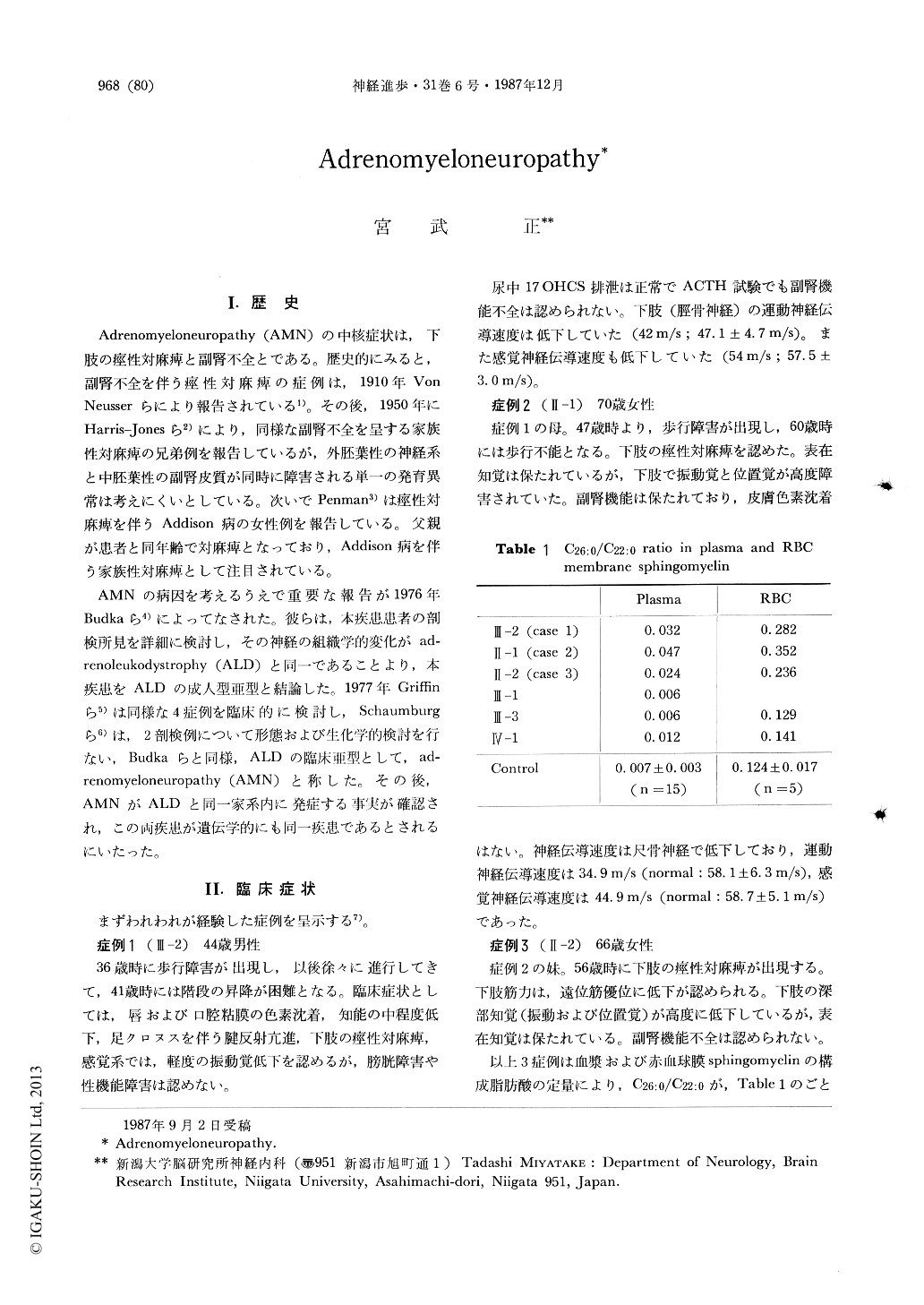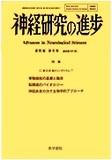Japanese
English
- 有料閲覧
- Abstract 文献概要
- 1ページ目 Look Inside
I.歴史
Adrenomyeloneuropathy(AMN)の中核症状は,下肢の痙性対麻痺と副腎不全とである。歴史的にみると,副腎不全を伴う痙性対麻痺の症例は,1910年VonNeusserらにより報告されている1)。その後,1950年にHarris-Jonesら2)により,同様な副腎不全を呈する家族性対麻痺の兄弟例を報告しているが,外胚葉性の神経系と中胚葉性の副腎皮質が同時に障害される単一の発育異常は考えにくいとしている。次いでPenman3)は痙性対麻痺を伴うAddison病の女性例を報告している。父親が患者と同年齢で対麻痺となっており,Addison病を伴う家族性対麻痺として注目されている。
AMNの病因を考えるうえで重要な報告が1976年Budkaら4)によってなされた。彼らは,本疾患患者の剖検所見を詳細に検討し,その神経の組織学的変化がadrenoleukodystrophy(ALD)と同一であることより,本疾患をALDの成人型亜型と結論した。1977年Griffinら5)は同様な4症例を臨床的に検討し,Schaumburgら6)は,2剖検例について形態および生化学的検討を行ない,Budkaらと同様,ALDの臨床亜型として,adrenomyeloneuropathy(AMN)と称した。その後,AMNがALDと同一家系内に発症する事実が確認され,この両疾患が遺伝学的にも同一疾患であるとされるにいたった。
Adrenomyeloneuropathy (AMN) is a hereditary disorder characterized by a progressive spastic paraparesis combined with sensory disturbances and adrenal insufficiency. This disease is considered to be a same disorder genetically by the finding that ALD co-occurs in a single kindred.
Clinical symptoms of this disorder are consisted of spastic paraparesis with mild sensory disturbance. Urinary disturbance, adrenal insufficiency and the findings of peripheral neuropathy are observed in about half of the patients.

Copyright © 1987, Igaku-Shoin Ltd. All rights reserved.


